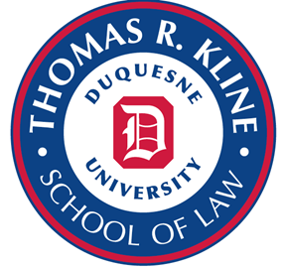The Road to Bostock
Document Type
Article
Abstract
On June 15, 2020, the Supreme Court of the United States announced its opinion in the landmark case Bostock v. Clayton County, Ga., in which the Court ruled 6-3—crossing conceived ideological lines—that the statutory prohibition against discrimination “because of sex” set forth in the Civil Rights Act of 1964 (the “Act”) extends to prohibit discrimination because of sexual orientation or gender identity or expression. Bostock—a consolidated case —involved the plight of three employees who had been terminated because of their sexual orientation or gender identity and expression. Writing for the majority, Justice Neil M. Gorsuch succinctly explained: “An employer who fires an individual merely for being gay or transgender defies the law.”
The Court’s decision here has significant societal implications for millions of American workers. By some counts, eight million people (or approximately four percent of the American workforce) identify as gay, lesbian, bisexual, or transgender. “Sexual orientation-based and gender identity discrimination is a common occurrence in many workplaces across the country.” “Research conducted over the past four decades yields compelling evidence that employment discrimination against LGBT people exists and that it has a range of negative effects on LGBT employees.” Studies conducted in the 1980s and 1990s revealed that 16% to 68% of self-identifying lesbian, gay, and transgender respondents “reported experiencing employment discrimination at some point in their lives.” Since the mid-1990s, at least fifteen studies found that 15 percent to 43 percent of lesbian, gay, and transgender respondents experienced discrimination in the workplace. Forms of discrimination varied, ranging from being fired or denied employment, being overlooked for promotions, receiving unequal pay or benefits, receiving negative performance evaluations, and being victimized by vandalism or verbal or physical abuse.
Those who identify as transgender are particularly susceptible to workplace discrimination and disparate treatment. Studies conducted between 1996 and 2006 revealed that 20% to 57% of transgender individuals had been subject to mistreatment, including termination, being refused employment, harassment, and denial of promotion.
As recently as 2011, 90 percent of respondents to the largest survey of transgender people to date reported having experienced harassment or mistreatment at work, or had taken actions to avoid it, and 47 percent reported having been discriminated against in hiring, promotion, or job retention because of their gender identity.
Evidence demonstrates that such workplace discrimination and harassment can have a negative impact on the wages and mental and physical health of those who identify as LGBT people. A significant body of empirical data suggests that the fear of discrimination, in and of itself, is associated with poor workplace performance and negative health outcomes. A 1999 study indicated that LGBT employees who had experienced discrimination suffered from higher rates of psychological distress and other health-related problems. Likewise, they reported lower job satisfaction and were more likely to be absent from work, or quit altogether.
Now, these workers may avail themselves through remedies under Title VII, not because of who they are not, but because of who they are. This moment in our legal history is the result of a remarkable and fascinating journey and should be characterized by celebration and foresightfulness. This article will attempt to concisely capture where we have been, assess where we are, and anticipate where we might be going. Part I will briefly review the history of civil rights law in the United States, with a particular focus on the “federalization” of civil rights protections and the suspect history of the inclusion of the term “sex” in Title VII of the Act. Part II will then survey the development of law relating to discrimination because of sexual orientation or gender identity or expression and will evaluate the roots of the legal arguments for such anti-discrimination prohibitions on the alternative grounds of textualism and stare decisis. Part III will consider how the Court resolved the question in favor of textualism. Finally, Part IV will anticipate the legacy of Bostock, including its impact on matters of statutory interpretation, social change, and the now-heightened tension between the statutory prohibition against employment discrimination and the First Amendment right to freedom of religion.
Repository Citation
Rice, J. (2021). The Road to Bostock. FIU Law Review, 15 (2). Retrieved from https://dsc.duq.edu/law-faculty-scholarship/110

